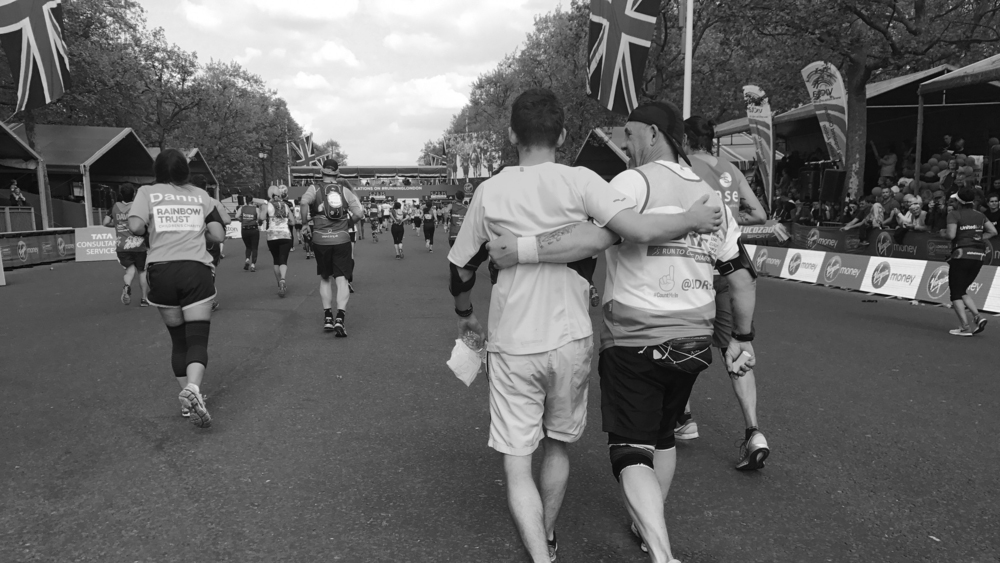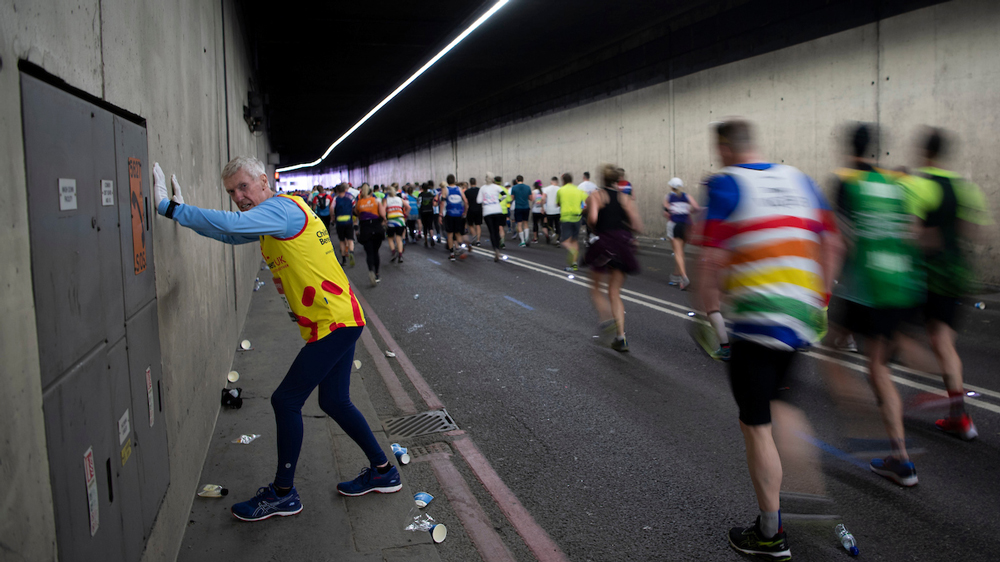What To Do When Your London Marathon Doesn’t Go To Plan
Pull your race back from the brink by heeding these expert solutions to mid-run issues

Some people will glide through the London Marathon without any problems. Everything will go exactly to plan and they’ll finish in the time they want without their body falling to pieces. However, those people will be in the minority, because a marathon is a serious undertaking.
We’ve run the London Marathon three times and experienced one huge blow-up at the event in 2018, when it was very hot and we made the all-too-common mistake of starting too fast. What helped us get through that day was switching to a walk/run strategy in the second half of the race – running slowly, and walking for a couple of minutes every mile or so.
Going out too fast is just one problem that crops up repeatedly when running a marathon, so we’ve enlisted running coach Nick Anderson from Running With Us, Polar’s official training partner, to provide some solutions for when these mini (or indeed maxi) marathon crises arise.
You’ve Gone Out Too Fast
You knew this was a potential pitfall and yet here you are, running way faster than you should be. Fortunately, in some ways at least, the marathon is looooong.
“You’ve got time to rein it in,” says Anderson. “The real problem area in the London Marathon is Cutty Sark to Tower Bridge. That period, between six or seven miles and halfway, is where the real damage is done. People always say, ‘I felt fantastic’. Well of course you felt fantastic, you’ve been training for a marathon and this is only six to 13 miles. Please, please slow down and bank the energy.
“People try to create a buffer – get ahead of time – and that goes horribly wrong. You can lose that three or four times over at the other end. If you bank the energy you’ll be able to push on in the second half, especially at 18 to 20 miles.”
You Need The Toilet
In almost every life situation people are happy to just go to the toilet when they need it. The exception, it would seem, is when they’re on pace for a marathon PB.
Get the Coach Newsletter
Sign up for workout ideas, training advice, reviews of the latest gear and more.
“Look, the guy who came second in the Brighton Marathon in 2018, he stopped twice in the first half because he had a dodgy tummy,” says Anderson. “He sorted himself out and on he went – there are plenty of loos on the course.
“What you can’t do is run for 5K or 10K in agony, slowing down, trying to contract your pelvic floor and everything else. You just need to go to the loo. If you lose a minute sorting it out you’re probably going to gain five to ten minutes later on through avoiding things going wrong.
“If you were going to win the London Marathon and were on world record schedule and your name was Paula Radcliffe, well, we’d all do what Paula did, wouldn’t we? But for most people losing a minute is the wise thing to do.”
You Feel A Niggle
An altogether more serious issue than needing the toilet, when you feel a niggle it’s important to work out how bad it is quickly, because it’s always better to stay healthy and race another day.
“If the pain is getting progressively worse over the miles I would stop at the side of the road and stretch the affected area to see if that can alleviate it.” says Anderson. “If it’s a niggle you’ve had in training and it’s raising its head again, stop every mile or every few miles and stretch to try to get rid of it.
“If you’re chasing a time or a PB you’ve got to make a calculated decision. Athletes often try to push through it and then it suddenly goes wrong. That’s the risk – sometimes you are better off getting treatment. If it’s getting really bad and it’s early in the race or mid-race and you know you’re going to struggle later on, I would stop and get it sorted out. You can always race another marathon.”

THE CHAFING! THE CHAFING!
This is one issue you really should have sorted out though savvy pre-race planning, but there should be some Vaseline available on the course if you keep a sharp eye out.
“Vaseline and various gels – they do work,” says Anderson. “Look at the fabric you’re wearing, and there are plasters and pads you can put on which will stop you having an issue. You need good running underwear, and you should think about lubricating various areas. There’s no reason to experience chafing – it’s all about planning.
See related
- 21 Tips For London Marathon First-Timers
- How To Cope Mentally When The Going Gets Tough In Your Marathon Training
- Nine Things I Learned Running The London Marathon At 45
You’re Only Ten Miles In And You’re Screwed
If running one more mile, let alone 16, feels impossible, focus on your motivation for signing up to the event in the first place. And maybe start walking.
“Why are you running? Are you running to raise money for a charity? Is this something you’ve got to do? In which case slow down and move towards a walk/run strategy,” says Anderson. “Reduce the pace – everything is now about getting round. Make it a fun day out, rather than trying to run a time.
“One bad mile does not mean the marathon has gone wrong. The marathon is 26 miles and every mile will feel different. But if you’ve had a number of bad miles and you’re starting to struggle and it’s getting worse and worse then there is an issue. You need to back off and decide if you want to finish. And if you’ve got to get around, you have to change your strategy, because if it’s not right at ten miles it’s definitely not going to be right at 20.”
Your Running Partner Has Left You For Dead
“There are thousands of people to run with!” says Anderson. “If you’ve made a pact to finish together, look after each other. But if you start together and one feels better than the other, you have to decide – and maybe accept that if one of you feels better, they carry on ahead.
“Don’t try to stick with someone you know you can’t stick with, then get to 18 miles absolutely knackered. Be realistic.”

Nick Harris-Fry is a journalist who has been covering health and fitness since 2015. Nick is an avid runner, covering 70-110km a week, which gives him ample opportunity to test a wide range of running shoes and running gear. He is also the chief tester for fitness trackers and running watches, treadmills and exercise bikes, and workout headphones.
